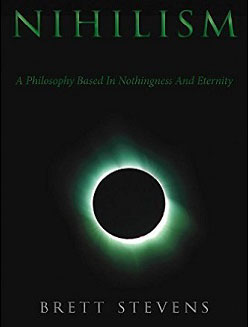Irish Immigration Compelled the Civil War
Those of us who take a middle path on race — recognizing the unworkability of poly-ethnic socities, but also standing against the bigotry of scapegoating haters — find the idea of slavery ridiculous because it inherently produces low quality labor, doubly so when foreign labor is used.
Still, it remains popular to this day, albeit in disguise, because it is an easy answer. If you have a hard job, just enslave some idiots and force them to do it, using the whip to motivate where no ethnic loyalty or desire to succeed exists.
Most of us in these United States disliked the anti-Black and Negrophobic attitudes of the old days, but similarly and equally dislike “integration.” We want a society of our own, and we are OK with more expensive cotton and crops to achieve that.
Other ethnic groups, like the Irish, feel no such loyalty to the founding of the USA and its pioneer heritage, therefore work to subvert that. For example, the 14A was the result of Irish immigration peaking in 1848 after three years of potato famine:
Starting in 1848, at a time when Bingham was beginning his political career, Ohio began a rapid change in its regulation of blacks, while taking an increasingly strong political stand against southern slavery. A resolution of that year urged the national Congress to prohibit slavery in any territories acquired in the Mexican War. More significantly for the background to the Fourteenth Amendment, in that year a new Ohio law provided for two separate methods for the education of blacks. For the first time in the state’s history, the laws of Ohio specifically allowed school districts to permit blacks to attend schools with whites. The law also authorized the creation of segregated schools for blacks funded by taxes collected from blacks. These schools would be organized on a segregated basis. While considered a mark of discrimination at the time (just as it is today), this law was nevertheless an important and positive step forward in the expansion of rights for blacks in Ohio.
Without this law, blacks had no right to a public education on either an integrated or a segregated basis. This law marked an improvement over the earlier conditions that had denied blacks a public school education. In addition, this law allowed blacks to attend schools with whites if local communities did not object. In 1849, the Ohio legislature acted to repeal the registration and surety bond requirements of the 1804 and 1807 laws, allow blacks to testify against whites, and give blacks even greater access to the public schools. Laws passed in the 1850s, when Bingham was in Congress and a rising star in the Republican Party, provided blacks with new protections against kidnapping and demonstrated Ohio’s hostility to the federal Fugitive Slave Law of 1850.
It turns out that Irish dominance among the electorate caused a Leftward shift that parallels the influence that CAIR, BLM, La Raza, and AIPAC have today:
But the Irish population did not reach significant proportions until 1848, when 1,024 immigrants were in Cleveland. Reflecting the clannishness of their forebears in the old country, the greater part of the Irish immigrants who came to Cleveland were from the poor but independent County Mayo in the west of Ireland. Despite being agrarian in Ireland, they did not farm in the Cleveland area, instead becoming laborers who unloaded ships or worked in the steel mills that were opening along the CUYAHOGA RIVER and in NEWBURGH.
The HIBERNIAN GUARDS, founded before 1850, were “a band of Irish soldiers” who paraded on St. Patrick’s Day, had annual banquets, and during the Civil War actively recruited men who saw combat. In the early 1870s, the Irish Literary & Benevolent Society met weekly for social purposes and the promotion of Irish culture.
In fact, the event that preciptated the Civil War was the demographic change to the American population such that it favored the Irish:
1847 – William Halpin arrives in Cincinnati. Deeply committed to winning freedom for his native Ireland, he is a member of the local Robert Emmett Irish Immigrant Aid Society and the Exiled Sons of Ireland, both organizations working to oust England.
1850 – St. Patrick’s Church on Third and Mill Streets is dedicated, staffed by Irish priests to serve the growing Irish population in Cincinnati.
1850– By this time the Irish make up 43 percent of the foreign-born population in the United States.
We get a lot of flack on this site for saying that diversity is the problem, not Blacks. Maybe there are problems with Blacks, or maybe the extreme biological determinist cultural relativists like myself are correct in seeing that as an artifact of where they evolved and secondary to the issue of diversity.
However, the proof of our assertion can be found in the Irish experience. Once another ethnic group showed up, social order broke down and infighting occurred, dividing the nation against itself and making civil war inevitable because there were now fewer values held in common.
Tags: 14A, civil war, diversity, emancipation, irish, irish immigration, john bingham, slavery










